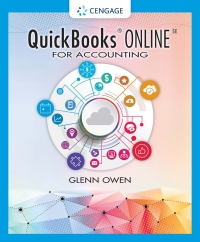Question
Subway Sandwiches operates a fast-casual sandwich chain in California. The company's first location, SFO, was opened in 2018. The Sanjose and LA locations followed suit
Subway Sandwiches operates a fast-casual sandwich chain in California. The company's first location, SFO, was opened in 2018. The Sanjose and LA locations followed suit in 2019. Operations are heavily decentralized and store managers are evaluated on their return on investment (ROI) with corporate expecting them to achieve at least a 20% ROI. (As explained below, Subway calculates ROI as the controllable margin of the store in a period divided by the total assets at the end of the period.) The company is considering changing its performance evaluation system to an EVA approach. Data for 2021 is provided below:
| Sanjose | SFO | LA | Total | |
| Revenues | $3,683,000 | $4,150,000 | $3,130,000 | $10,963,000 |
| Variable Food Costs | $1,415,504 | $1,611,000 | $1,264,000 | $4,290,504 |
| Gross Profit | 2,267,496 | 2,539,000 | 1,866,000 | 6,672,496 |
| Variable Labor Costs | $991,200 | $913,000 | $688,600 | $2,592,800 |
| Variable Advertising (5% of Revenues) | $165,735 | $186,750 | $140,850 | $493,335 |
| Manager Salary | $100,000 | $120,000 | $132,000 | $352,000 |
| Controllable Expenses | 1,256,935 | 1,219,750 | 961,450 | 3,438,135 |
| Controllable Margin | 1,010,561 | 1,319,250 | 904,550 | 3,234,361 |
| Rent | $350,000 | $380,000 | $360,000 | $1,090,000 |
| General Admin | $500,350 | $629,500 | $323,900 | $1,453,750 |
| Corporate Overhead | $0 | $0 | $0 | $175,000 |
| Total Non-Controllable Expenses | 850,350 | 1,009,500 | 683,900 | 2,718,750 |
| Operating Profit | 160,211 | 309,750 | 220,650 | 515,611 |
| Interest | 270,000 | |||
| Taxes | 49,122 | |||
| Net income | 196,489 | |||
| Net book value at 2021 year-end: | ||||
| Current assets | $970,000 | $850,000 | $600,000 | 2,420,000 |
| Long-term assets | 3,675,000 | 4,802,000 | 3,205,000 | 11,682,000 |
| Total assets | 4,645,000 | 5,652,000 | 3,805,000 | 14,102,000 |
| Current liabilities (non-interest bearing) | 330,000 | 265,000 | 184,000 | 779,000 |
| Long-term debt | - | - | - | 4,500,000 |
| Stockholders' equity | 8,823,000 | |||
| Total liabilities and equity | 14,102,000 | |||
| Weighted average cost of capital (WACC) | 8% |
The company currently borrows at 6% per year on its long-term debt and pays a 20% tax rate on income.
Subwaybelieves advertising provides benefits over 4 years and therefore for EVA purposes should be amortized on a straight-line basis over a 4-year useful life (beginning with the year of the expenditure). Similarly, the organization prioritizes training and expects the benefits to persist over a 3-year useful life. Advertising and training expenses incurred in the years 2018 through 2021 are as shown below:
| 2018 | 2019 | 2020 | 2021 | |
| GAAP Advertising Expense | $ 220,100 | $ 392,500 | $ 455,105 | $493,335 |
| Training Costs | $101,200 | $103,540 | $119,843 | $129,640 |
a) Calculate 2021 EVA for Subways Sandwiches. Calculate the 2021 Income statement and Balance Sheet adjustments related to advertising and training expenses. Clearly show and label the income effect (i.e., the net adjustment to NOPAT) and the balance sheet effect (i.e., the adjustment to invested capital) show analysis
b) Subways is considering a capital investment to upgrade the kitchen layout and install cold rooms in all three locations. The upgrades are expected to cost $840,000.The resulting annual cost savings is expected to increase operating profit by $120,000. Should SubwaysThe weighted go ahead with the investment if performance evaluation is based on EVA? Show your analysis
Step by Step Solution
There are 3 Steps involved in it
Step: 1

Get Instant Access to Expert-Tailored Solutions
See step-by-step solutions with expert insights and AI powered tools for academic success
Step: 2

Step: 3

Ace Your Homework with AI
Get the answers you need in no time with our AI-driven, step-by-step assistance
Get Started


